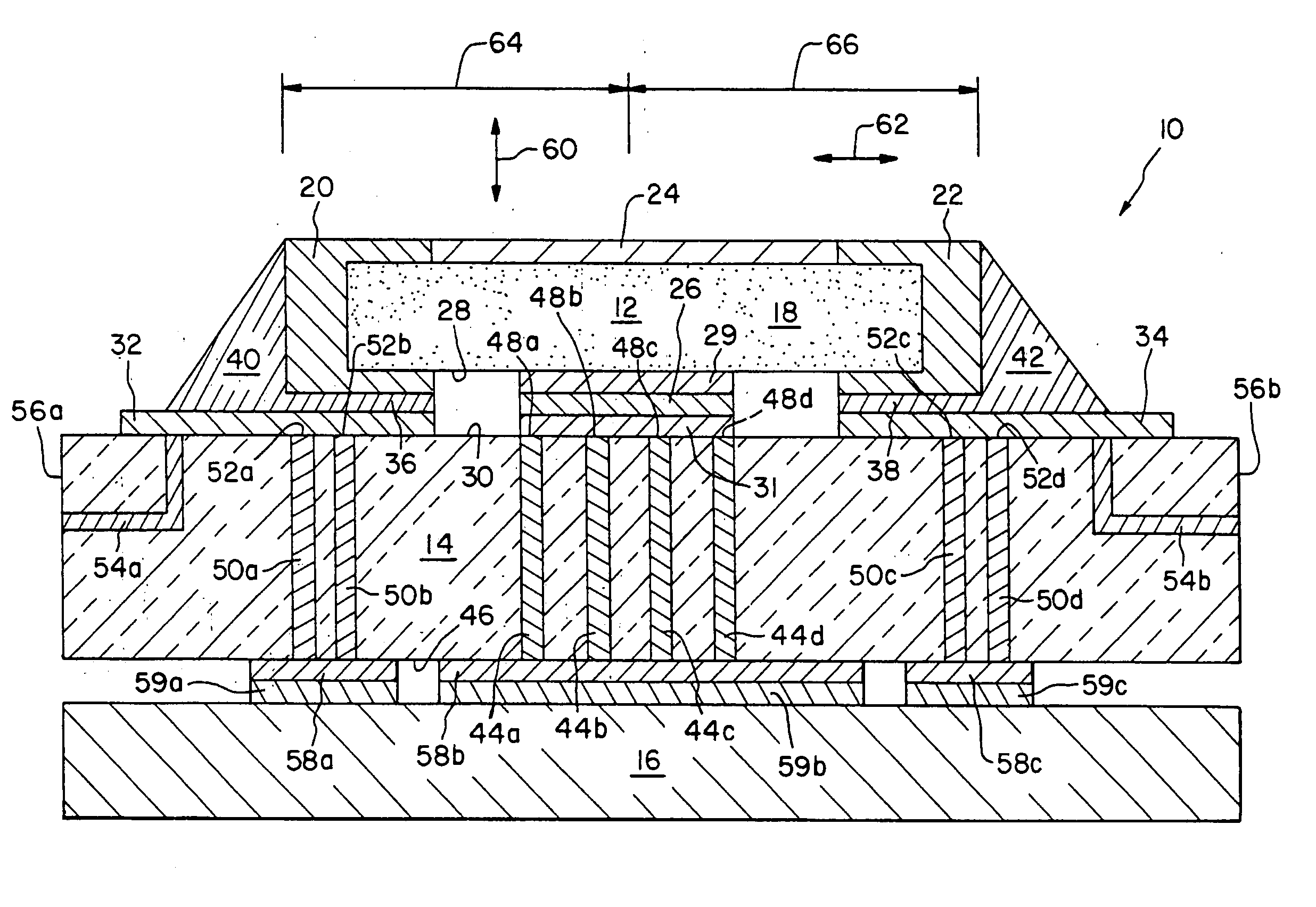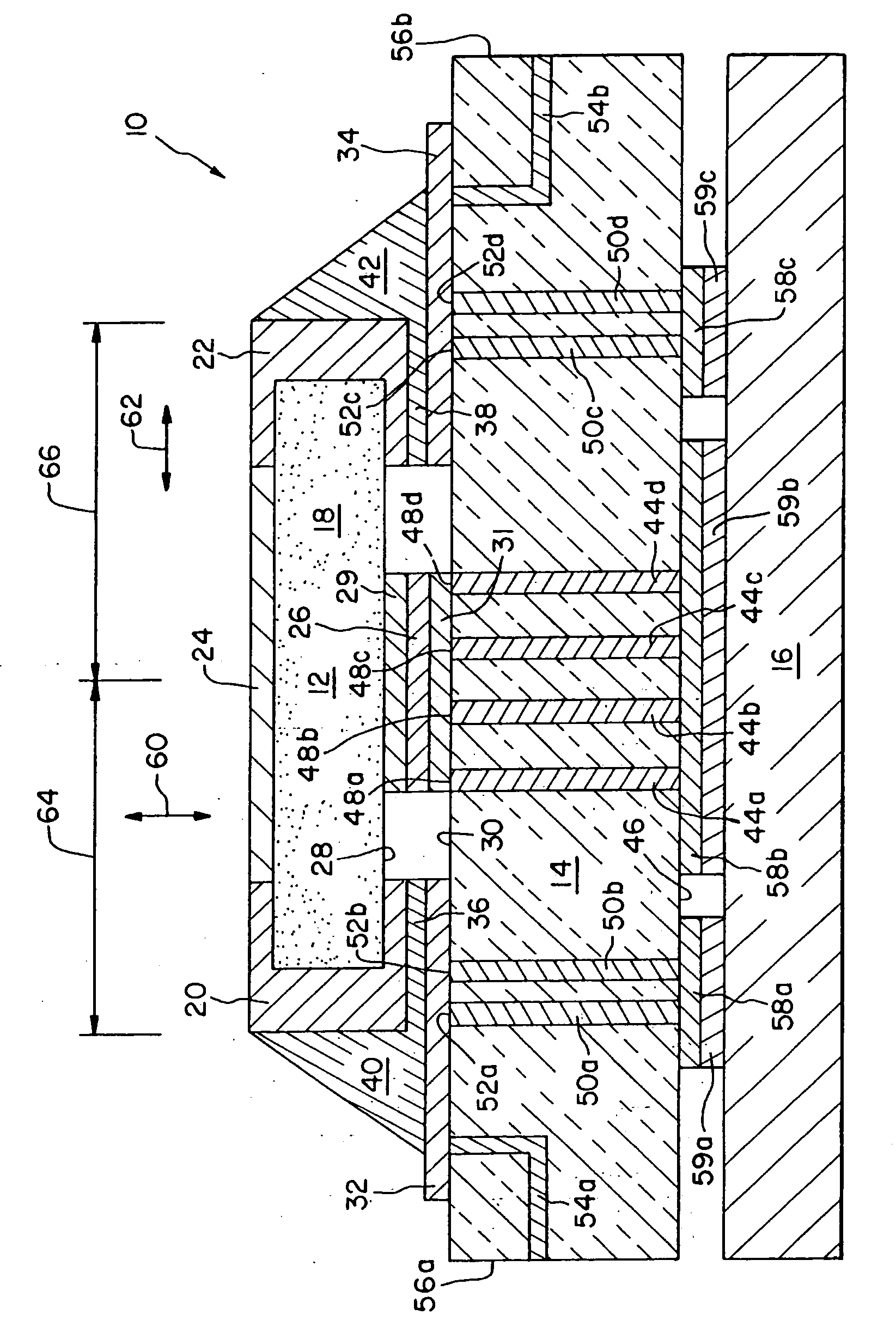Discrete electronic component arrangement including anchoring, thermally conductive pad
a technology of electronic components and thermally conductive pads, which is applied in the direction of printed circuit non-printed electric components association, sustainable manufacturing/processing, and final product manufacturing, etc., can solve the problems of component terminal cracking, premature failure of components, oxidation and intergranular corrosion, etc., to reduce component thermal expansion, reduce component temperature and thermal expansion, and reduce fatigue
- Summary
- Abstract
- Description
- Claims
- Application Information
AI Technical Summary
Benefits of technology
Problems solved by technology
Method used
Image
Examples
Embodiment Construction
[0013] The embodiments discussed below are not intended to be exhaustive or limit the invention to the precise forms disclosed in the following detailed description. Rather, the embodiments are chosen and described so that others skilled in the art may utilize their teachings.
[0014] One embodiment of an electronic component arrangement 10 of the present invention is shown in the drawing. Arrangement 10 includes a discrete electronic component in the form of a printed ink chip resistor 12 mounted on a substrate in the form of a printed circuit board (PCB) 14. A heat sink 16 absorbs and dissipates heat from PCB 14.
[0015] Chip 12 includes a body 18, a first terminal 20, a second terminal 22 and a centre-exposed pad 29. Body 18 may be formed of a ceramic material, for example, while terminals 20, 22 and pad 29 may be formed of an electrically conductive metal. In the embodiment shown, chip 12 is in the form of a printed ink resistor or polymer thick film (PTF) resistor having a layer ...
PUM
 Login to View More
Login to View More Abstract
Description
Claims
Application Information
 Login to View More
Login to View More - R&D
- Intellectual Property
- Life Sciences
- Materials
- Tech Scout
- Unparalleled Data Quality
- Higher Quality Content
- 60% Fewer Hallucinations
Browse by: Latest US Patents, China's latest patents, Technical Efficacy Thesaurus, Application Domain, Technology Topic, Popular Technical Reports.
© 2025 PatSnap. All rights reserved.Legal|Privacy policy|Modern Slavery Act Transparency Statement|Sitemap|About US| Contact US: help@patsnap.com


